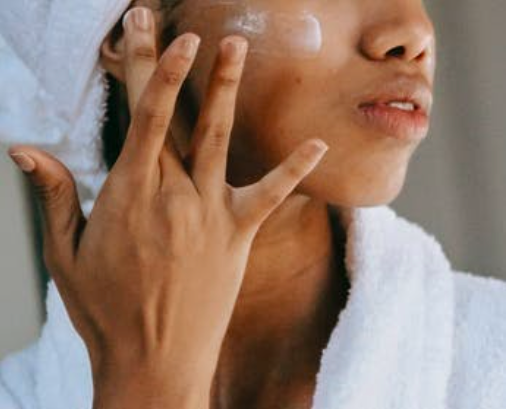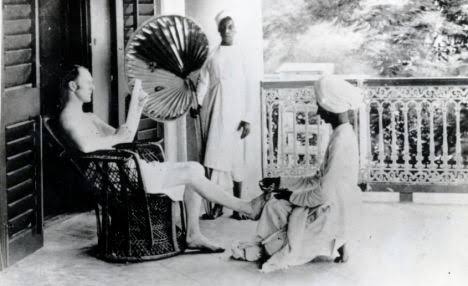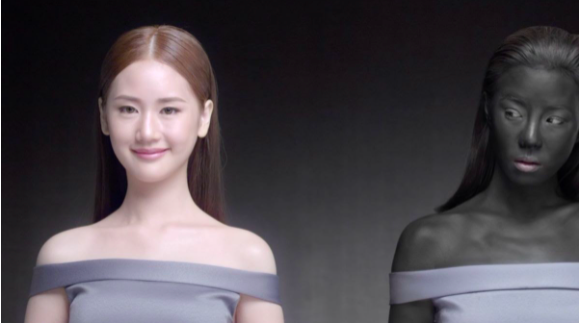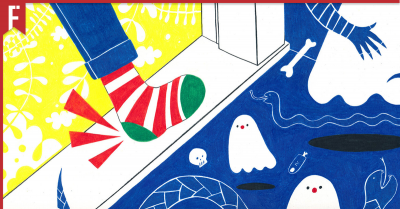
This isn’t exactly breaking news, and to be frank I’m exhausted over the fact that there are still people who aren’t seeing how this is a problem; but the sheer amount of blatant, unashamed blackface and brownface present in mainstream Malaysian media is just ridiculous at this point.
A most recent example of this was when local musician Choo Hao Ren released a music video for his song, ‘White Doll’ back in January, in collaboration with a brand that sells skin-whitening products. In the music video, a school girl (clearly painted to appear much darker than she actually is), is bullied by her peers for having tanned skin.
However, she soon finds skin-whitening supplements left by a secret admirer, which she takes over the course of a few months. In the end, her skin becomes lighter and she’s suddenly the object of everyone’s desire.
More Than Just Face Paint
Soon after its release, the video received backlash for its obvious use of brownface, and it was taken down following a (questionable) apology and clarification from the artist. While he clarified that he meant no ill intent, he followed up by stating,
“In Malaysia, a country with strong sunlight, is it really inappropriate to do a tanned makeup on [an] actor to present a plot of sunburnt? Even though the story [ended] up [showing] unconditional love from the boy towards the tanned skin girl?”
But that’s exactly what the issue is about. While the use of brownface is obviously not acceptable, the video’s storyline was one that contributed to an already tired and harmful narrative about dark-skinned people.

We’ve seen a similar story play out in countless commercials, and even in movies and TV shows.
A character dons face paint way darker than their actual skin tone to communicate (often using weirdly comedic undertones) that they’re supposed to be the undesirable “before”, and then transform into a light-skinned, attractive, confident person with the help of a magical product.
This trope portrays fair skin as the ultimate standard—the pinnacle of existence that makes anyone desirable and opens countless doors. Meanwhile, dark skin is the antithesis of that.
For generations, we’ve been either explicitly or implicitly told that having white skin is supposed to be a universally desired goal, and anyone who doesn’t meet that standard is considered unworthy of love, attention, kindness, friendship, and even career opportunities. But why has this message been drilled into our brains for so long?
If I sound angry, it’s because I am. I am frustrated and exhausted that darker-skinned people are continuously the butt of a joke.
When people don blackface or brownface, they can easily wipe off that face paint and enjoy the privileges many light-skinned people won’t even notice they have, all while contributing to a racist and colourist system that mocks and alienates dark-skinned people.
Meanwhile, those who actually have dark skin don’t get to wipe off their skin colour, because that’s who they are every day.
While this may be viewed as a harmless joke, it actually does more harm than people may realise. This is the lived reality of so many dark-skinned people.
50 Shades Of Colourism

Being ethnically Indian in Malaysia, I was more aware of my skin colour at an early age — from watching ‘Fair and Lovely’ commercials on TV, to examining my hands as a child and wondering why the rest of my body wasn’t the same colour as my palms.
I would even think to myself, “Why is my skin brown when the “pretty” girls on TV have light skin?”.
At the same time, I’m considered someone with medium-to-light skin in my ethnic community. However, in other groups, especially as a teenager, I was almost always the only brown person in the room, which meant that most of the time, I was the darkest in my group of friends (and boy was I reminded of it!).
So, in all honesty, I didn’t face much colourism in my own community because I was considered an “acceptable” shade of brown, although I would still get the odd comment of “don’t go outside so much, you’re getting darker”.
This is where the nuances of colourism are evident, because many of us experience it to varying degrees, and it all depends on how light or dark we’re deemed by different communities.
I experience some amount of privilege in one group, but I can still face colourism and racism in other groups. My experiences are my own, and likely don’t represent the experiences of other Malaysians who are considered dark-skinned within and outside their own communities.
Speaking to a friend from the same ethnic community as mine, it’s clear that her experiences were very different from my own.

“I will never forget when my uncle once told me that I would never get married and that no one would love me because I was as dark as a wild boar, or when someone would say, ‘Oh, you’re really pretty, too bad you’re dark’,” Veronica shared.
“…or when a classmate told me that they couldn’t see me in the dark, [except for] my teeth.”
“When I was younger, I was taught that being dark was equal to being unattractive. I thought being dark was my disadvantage.”
“At 10, I was slapped with whitening cream to make myself ‘whiter’ and it did nothing for my self-esteem. It took me years to finally embrace my skin colour, but I’m glad I did.”

Based on Veronica’s experience, it’s clear that colourism deeply affects the way we perceive ourselves, and our overall self worth. While she was able to unlearn these harmful ideals over time, many dark-skinned people unfortunately still struggle with the way they see themselves.
This is a problem that’s deeply entrenched not just in Malaysian society, but society as a whole. But where did all this hatred for dark skin come from?
When Did This All Start?
In many parts of Asia, colourism is said to be deeply rooted in classism that actually predates colonial times. Darker skinned people were often associated with manual labour and working in the sun (which would naturally result in them having tanned skin).
Meanwhile, lighter skin was often associated with nobility, or a higher socioeconomic status in general, because that meant they did not have to go out in the sun. In short, the colour of one’s skin was a marker of their social and economic standing in society.

This dynamic was exploited during colonial times, when colonists favoured those with lighter skin and sharper (i.e. more Eurocentric) features. Throughout many parts of Asia, colonists categorised society according to skin colour. In Indonesia for example, the Dutch created and enforced social hierarchies, placing Dutch people at the top, “yellow”-skinned East Asians in the middle, and the dark-skinned Indonesians at the bottom.
It gets more complex in an ethnically diverse country like Malaysia, because we have multiple standards to adhere to based on which community we’re in (i.e. our own ethnic communities versus the general Malaysian public).
But anyway, these are different times. We’re living in a postcolonial world, so why is colourism still so persistent?
Why Is This Still A Thing?
While we’ve moved past colonial times, we still have a lot of work to do when it comes to decolonising, especially at a social level.
There are a multitude of factors that have influenced the continued presence of colourism in society. Sure, we can blame society itself, or older generations that pass down prejudices against dark-skinned people to current generations, but I don’t think that even scratches the surface.
Apart from individuals and cultures contributing to the persistence of colourism, what system is colourism really upholding? Who is actually benefiting from this?

I can’t help but think about the countless multimillion-dollar corporations that have capitalised on this toxic social dynamic and the insecurities of dark-skinned people. In my opinion, they are equally, if not more responsible for contributing to this problem being perpetuated in society.
The way I see it, as long as we continue to let brands contribute to such a harmful narrative without them caring about the effect their message will have, especially on young and impressionable kids, then colourism will persist.
While it might seem rather superficial to be talking about colourism mainly in terms of media depictions of beauty standards, these portrayals contribute to harmful perceptions towards dark-skinned minorities and have real world implications at so many levels of society, including institutional levels.
Sometimes, these implications can even be fatal, with instances of brutality against certain minorities coming to light. Take for example the recent custodial deaths that happened both locally and internationally over the past year alone.
What I’m trying to get across is that although media portrayals may seem harmless at first glance, the ideas audiences take away from such portrayals can be harmful, and can insidiously perpetuate stereotyping and discrimination if gone unchecked.
It’s overwhelming to think about, and I’ve often felt powerless, especially when it comes to speaking out against colourism as an individual when large (practically untouchable) institutions continue to perpetuate this archaic and inherently racist ideal. But there has to be something we can do, right?
Moving Forward

At an individual level, we’ve also got to be the change we want to see. Even if there are no dark-skinned people in the room and you hear colourist remarks or jokes, if you’re light-skinned, use your voice as an ally to point out the issue with these types of jokes.
As adults, we should also call out relatives who make colourist remarks, especially if they’re towards children. If it’s relevant to the conversation, you can consider asking questions about why they think that way about dark-skinned people, because it could get them thinking more about their beliefs.
If you have or intend to have children, teach them to understand that differences in skin colour are normal and all shades are worthy of respect.
A non-profit organisation called Embrace Race has a useful action guide to addressing and preventing colourism in your family. Here’s a quick summary:
-
If your child notices differences in skin colour, help them recognise and acknowledge these differences instead of shutting them down.
-
Be sure to watch your language and try not to suggest that one shade is better or worse than another. Instead, normalise these differences.
-
Expose your kids to media (i.e. story books, movies, TV shows) with diverse representation.
-
Be more aware of your own potential biases when it comes to colourism and unlearn those biases.
-
Surround yourself with a diverse group of people.
As consumers, we also need to actively stop buying from brands that uphold colourist standards, and research the brands we intend to support. Ideally, if it’s within your means, support independent businesses whose ethics are in line with yours.
Ultimately, we should all strive for a society where dark-skinned people don’t have to endure discrimination and hatred (from others and themselves) over something out of their control.
Whether we’re talking about colourism or mental health, it’s important that we have honest and open conversations within our own circles to bring awareness of the stigma and prejudice surrounding such issues that are deeply entrenched in society.








